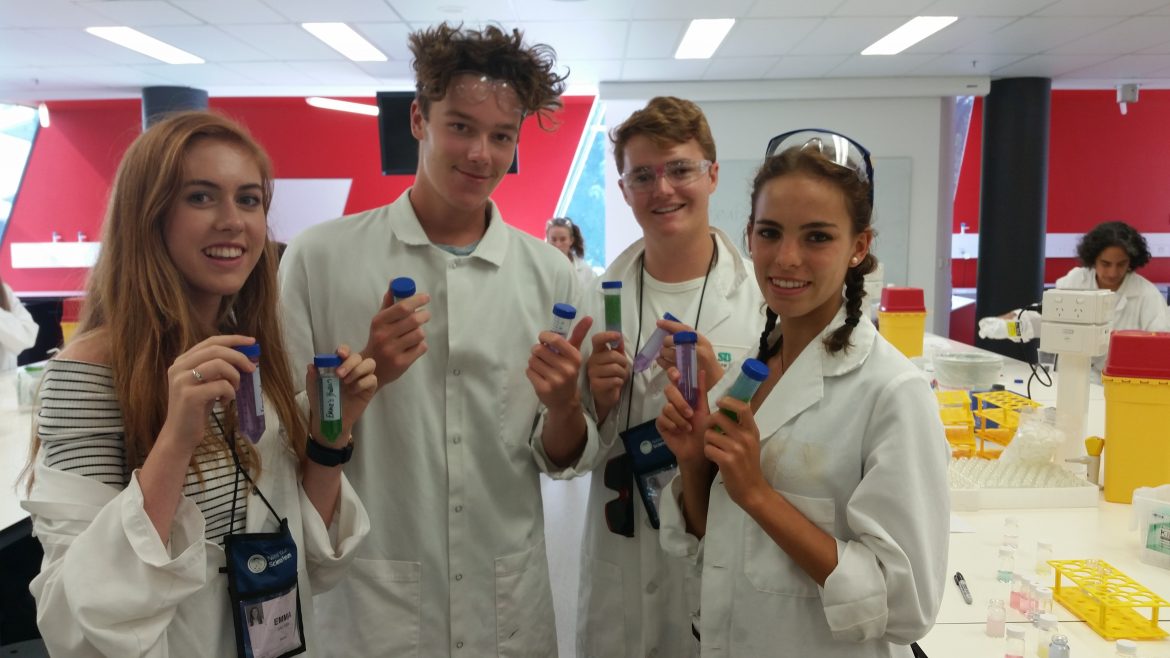With food security a global issue, investment in primary research into plant research has never been more important.
Session C’s food, agriculture, and animal and plant biology group “Fenner” headed to the Research School of Biology to look at some of the latest in plant science research at the ANU.
The entire session was spent in the lab, run by Alisha Duncan, the education and events officer, supported by a team of PhD students and researchers. They work on improving plant photosynthesis, which can improve the yield of staple food crops; the Fenner group's activity was a simple photosynthesis experiment.
The participants started by making a red cabbage pH indicator. The chemical anthocyanin in the cabbage naturally changes colour, based on the acidity of its environment. After creating this, they used a variety of substances to create a scale, such as bi-carb soda and egg whites.
PH can be used to measure photosynthesis by the amount of carbon dioxide (CO2) present in a solution. In this particular cabbage solution, it is purple when neutral, which also equates to atmospheric CO2. The higher the CO2, the more acidic it becomes, and the solution turns pink. The lower the CO2, the more basic it becomes, and it turns blue-green, or even yellow. When CO2 is high in a plant, it indicates that respiration is happening at a faster rate than photosynthesis, therefore the solution will turn pink. When C02 is low, it indicates photosynthesis is at a faster rate than respiration, and the solution turns blue-green/ yellow.
The group were testing photosynthesis of algae, so next had to make algae balls. This is done by suspending many single-celled algae in a jelly-like substance, each with equal amounts of photosynthetic material. After measuring the algae, the participants discussed possible variables that would affect the photosynthesis rate. Each person was given a tube of algae balls and a tube of indicator to test this variable at home.

Participants with their take-home pH indicator and algae balls
Being able to have such a hands-on activity at their last lab visit for Session C was fun, and helped to ensure there's more science to come!
Meg Stegeman, Communications Intern NYSF 2017 Session C and NYSF Alumna 2014